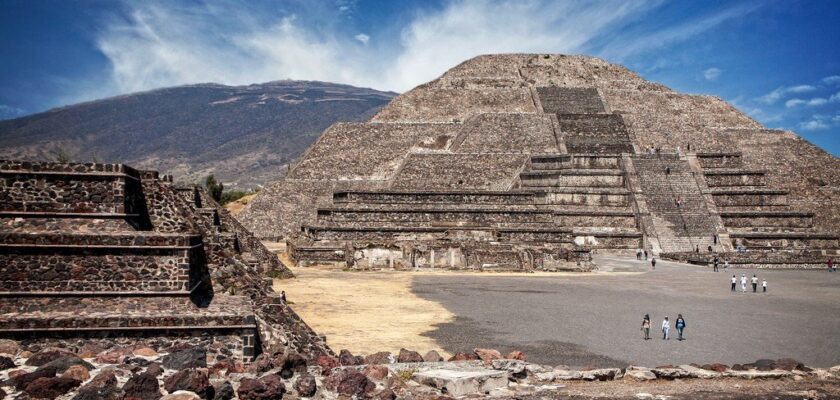Teotihuacan
Teotihuacan The center of the oldest advanced civilization in central Mexico, these ruins are some of the world’s most famous landmarks. The fate of the area’s civilization remains unknown, but we do know that it was home to a center of advanced culture, with a population of over 200,000 people. It is hard to underestimate the influence on the development of all of Mesoamerica of this mysterious place, located 40 kilometers north of Mexico City.
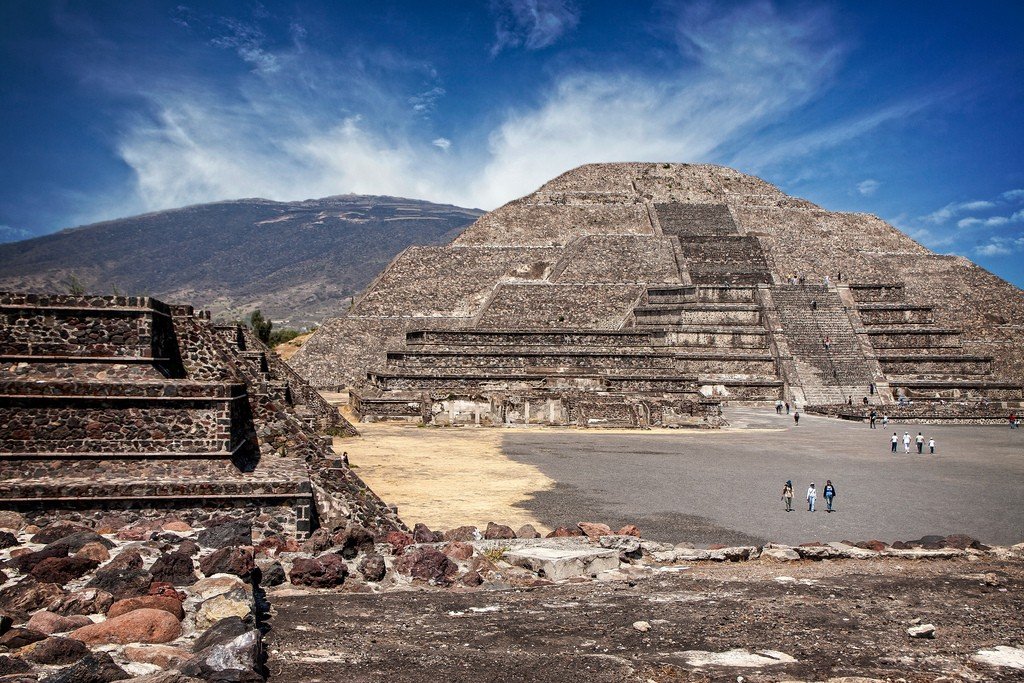
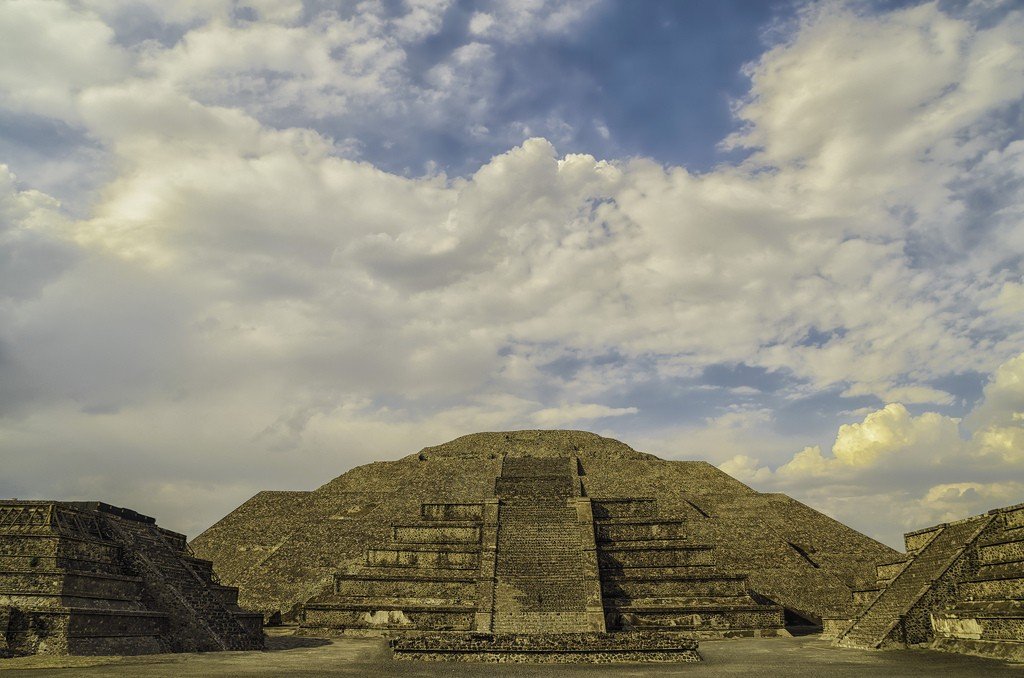
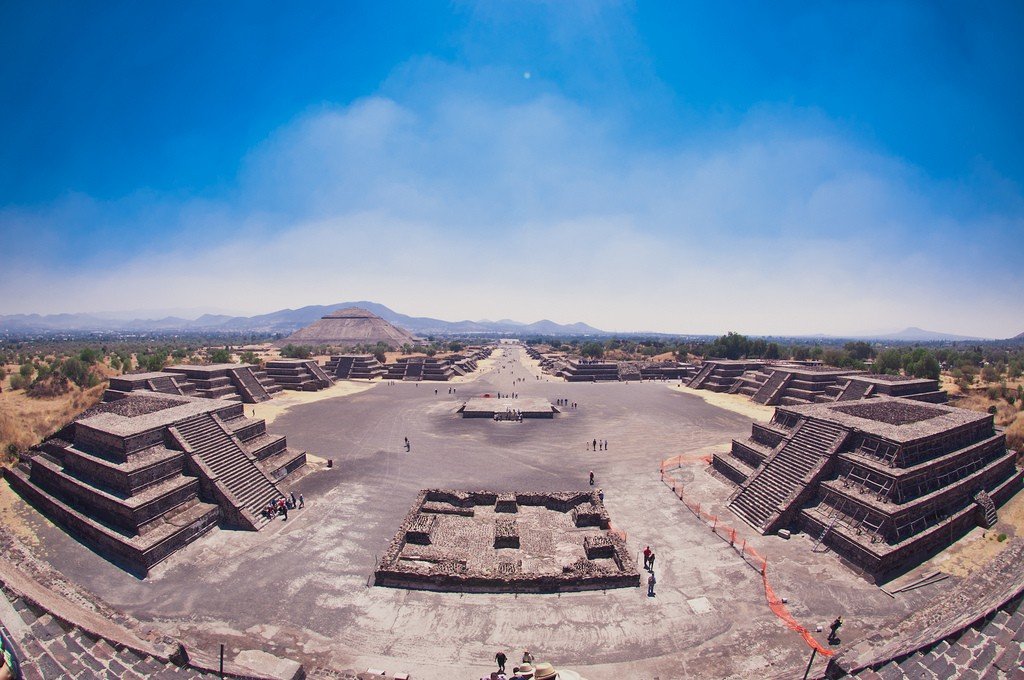
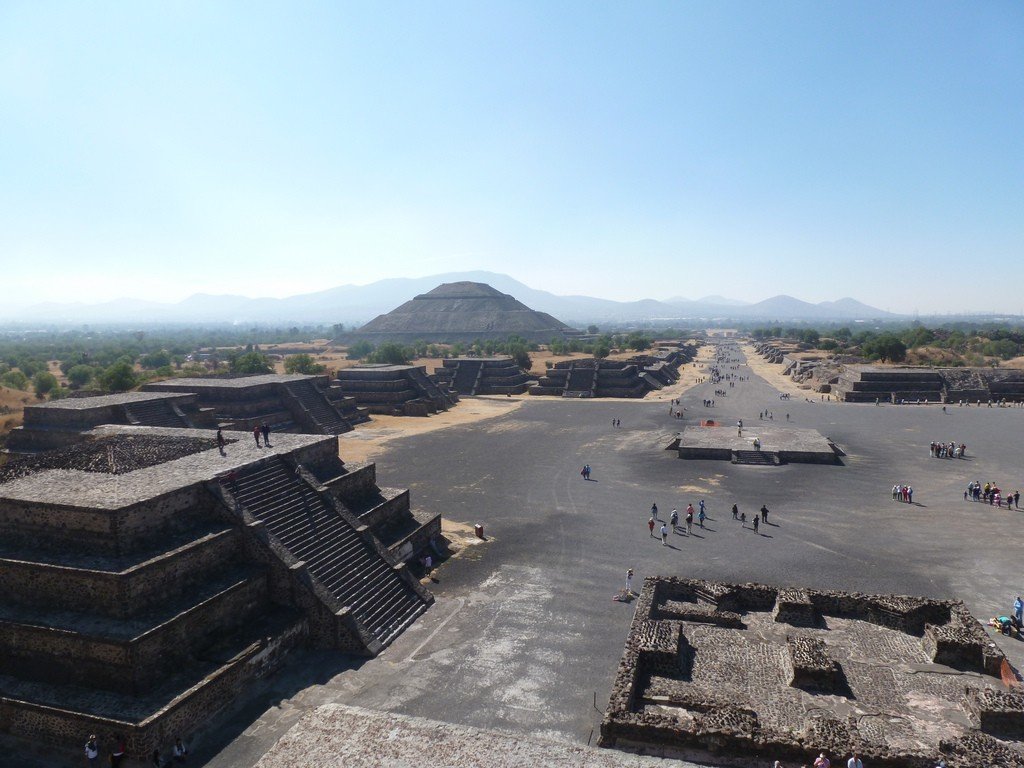
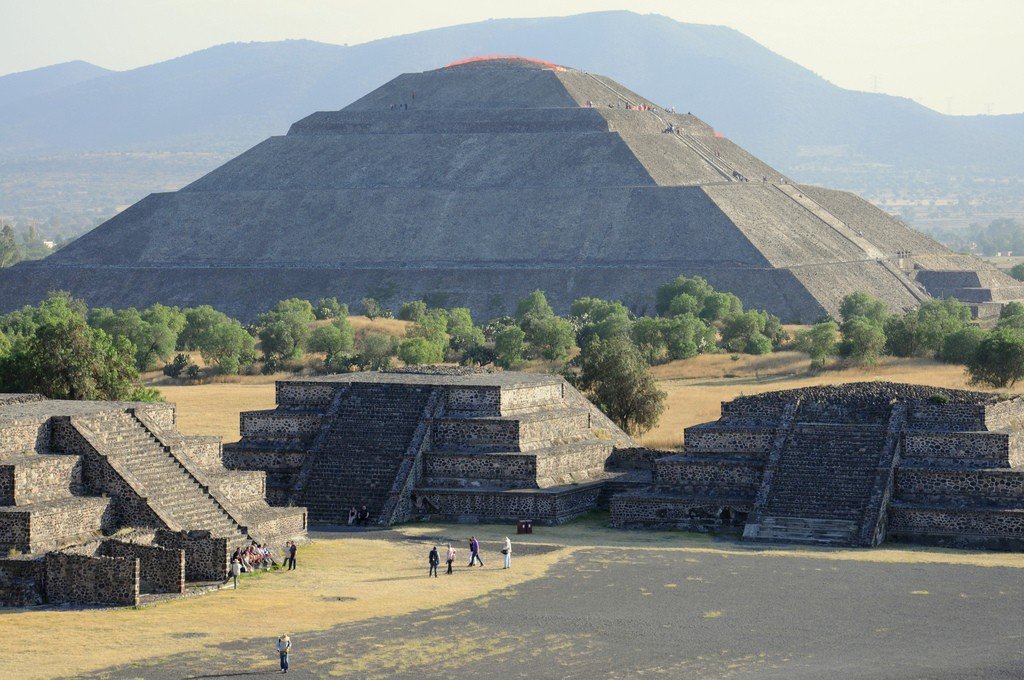
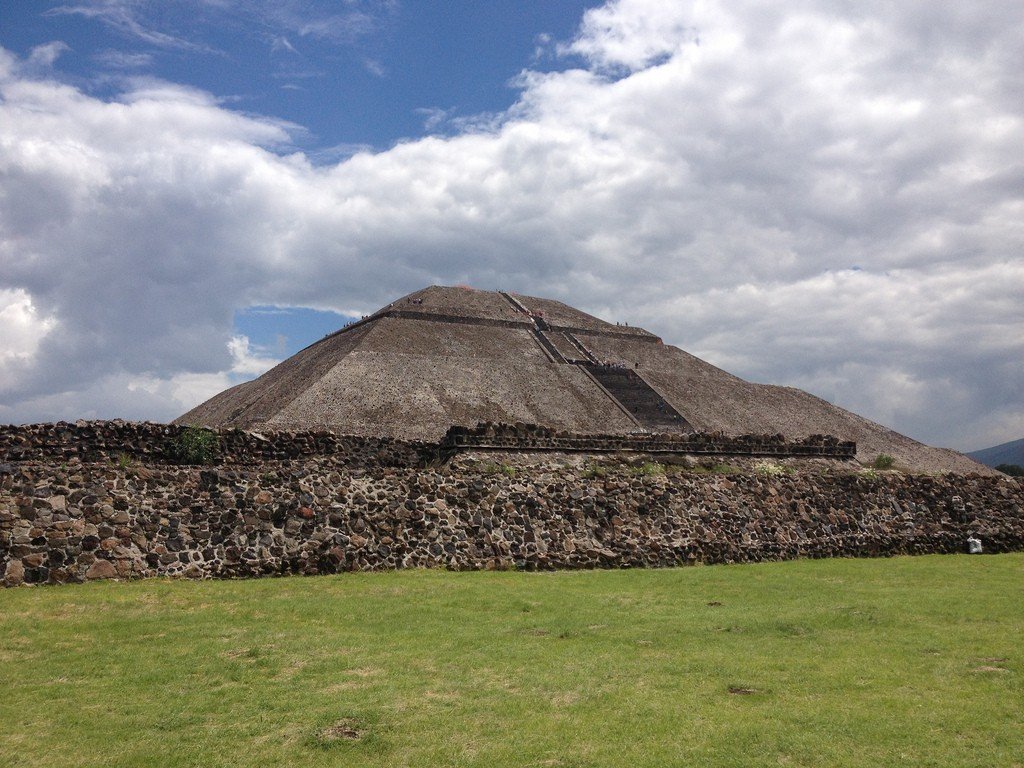
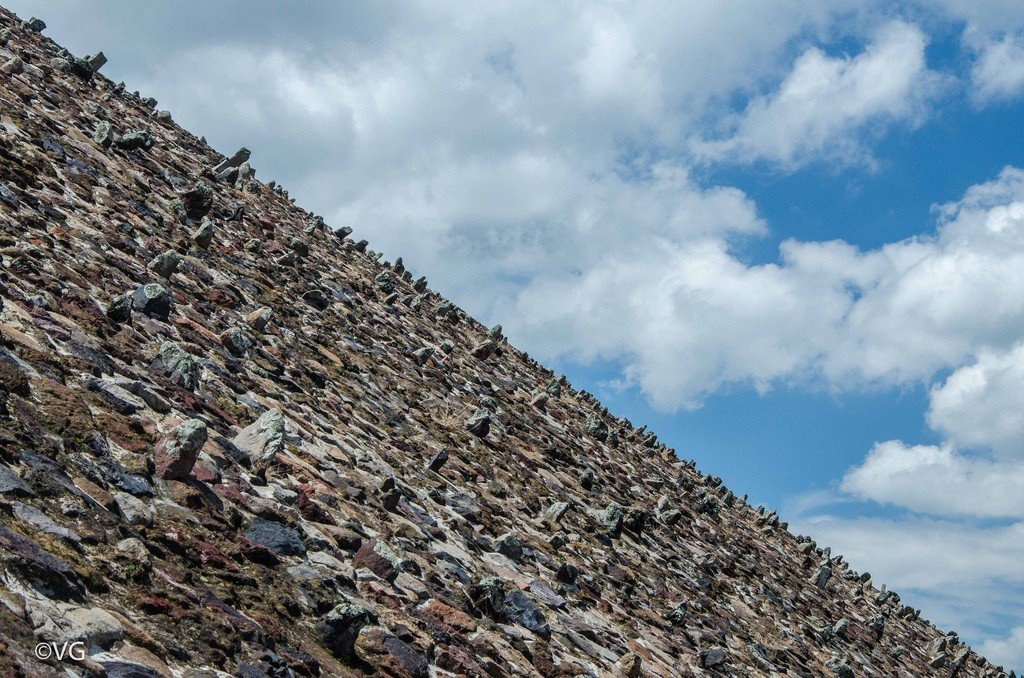
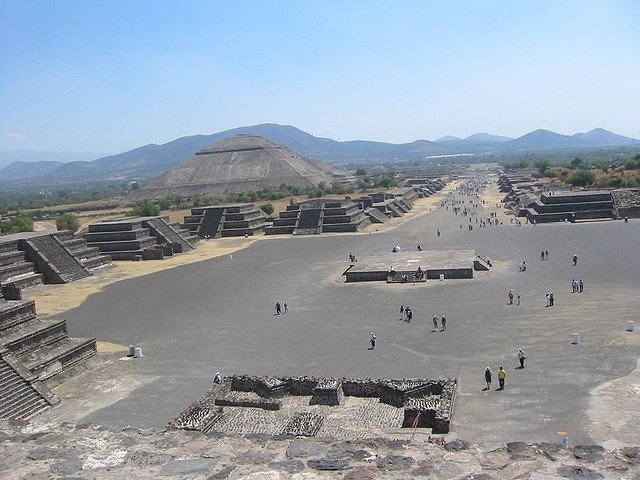
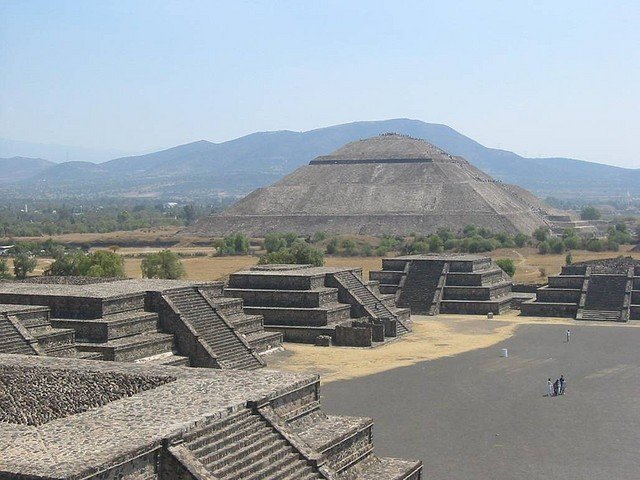
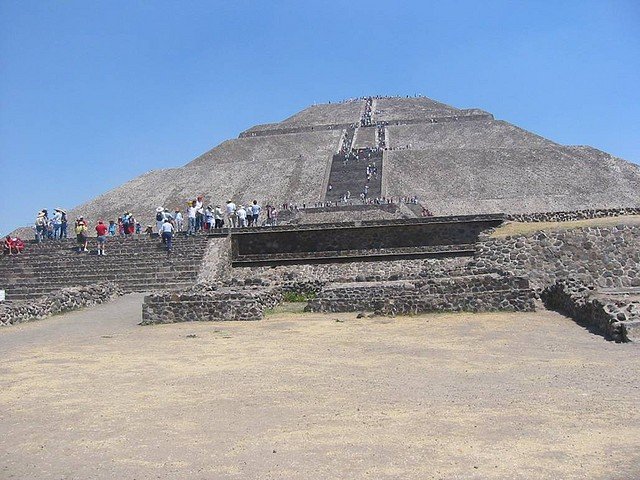
General information
As you enter Teotihuacan, notice the group of people in traditional costumes gathered around a tall pole. These are the “Flyers of Papantla” (Valadores de Papantla). They climb the pole, then one of them stands on top of it and plays the flute while the others “fly” around – spinning, tied by ropes around their ankles. The performance is repeated several times during the day; when it is over, the performers blow a hat around to collect payment for the spectacle.
.Teotihuacan is located 48 kilometers northwest of Mexico City – it is about an hour’s drive. Buses leave from the north city terminal every 30-60 minutes. 9 a.m.-5 p.m. Tues- Fri. Closed: Mon. Organized tours to Teotihuacan depart from Mexico City; you can join a group bus tour, or you can rent a guided car, giving you more freedom to explore. Many hotels in Mexico City also organize trips to the pyramids, offering transportation, meals en route, and a guide.
.History
The founding of Teotihuacan marks the beginning of the classical period of Mesoamerican history. Undoubtedly, it became the capital of a kingdom that surpassed in its grandeur, wealth and influence even the Aztec state that had arisen in its place. When the Aztecs came to the ruins of Teotihuacan in the 14th century, they themselves were amazed at the size of these buildings, although they knew little about who had built them.
.
Perhaps the first settlers were primitive agriculturalists who came from the north and began building the city in 300 BC. Admittedly, these farmers proved to be remarkably skillful builders, as Teotihuacan quickly became a very important place. Active trade links with the rest of Mesoamerica were the source of Teotihuacan’s influence and wealth. The city became a thriving economic center with a population of 200,000 and reached its peak between 300 and 600 A.D. However, all this did not save the city from falling around 650 A.D., when almost all of its inhabitants left. Traces of fire on many of the buildings testify to the eventual disaster that drove the city’s inhabitants out. About 100 years later, in 750 A.D., the Toltec army passed through here, and Teotihuacan finally became a ghost town.
.
In the 14th century, the Aztecs repopulated its ruins. They gave the city its current name, which means “place where man becomes a god” or “city of the gods”. The size of the city was awe-inspiring to the Aztecs. They sacredly believed that only giants could create such splendor and that even the sun and moon were once born in this city.
.Architecture
Archaeologists have found that the inhabitants of Teotihuacan worshipped the planet Venus, determining the time of wars and sacrifices based on rituals related to the appearance of the morning or evening star. Numerous burial tombs with jewelry, pottery, and everyday objects have been found near the foundations of buildings.
.
Today, the rough stone buildings – the three pyramids, the sacrificial altars, the houses covered in plaster and painted with brightly colored scarlet frescoes in ancient times – remain just as beautiful.
.The Road of the Dead runs from north to south, with the Pyramid of the Moon in the north and the fortress (citadel) in the south.
.Archaeologists exploring the inside of Quetzalcoatl’s pyramid found traces of burials. Each of the tiers was once covered with images of winged serpents.
Heading north to the Pyramid of the Moon, look to the right where the crumbling wall is covered by a modern roof. You can still see a drawing of a jaguar there – it will help you visualize how magnificent this complex once was.
The Pyramid of the Sun east of the central Road of the Dead is the third largest pyramid in the world, the base of each side is 221 meters long and the pyramid reaches a height of 64 meters. Built on top of an existing structure, it was completed around the year 300, and the view from its top is one of the unforgettable ones in Mexico.
.The Pyramid of the Moon is surrounded by smaller temples and the Quetzalpalotl Palace, with stunning drawings depicting butterflies, and the view from there down the main street will make you dream of traveling here again.
.Chronology
- 500 B.C.: First pottery. .
- 200 BCE: Beginning of construction of the Pyramid of the Sun. .
- 50 A.D.: The Temple of Quetzalcoatl is built. .
- 100 CE: Golden Age of the city, when the population reached 200,000 and an area of 30 square kilometers. .
- 200: First attack on the city by nomadic tribes.
- 400-420: Nomads captured the city for the first time, causing mass s, of the citizens.
- 650: Teotihuacan was abandoned by almost all of its inhabitants.
